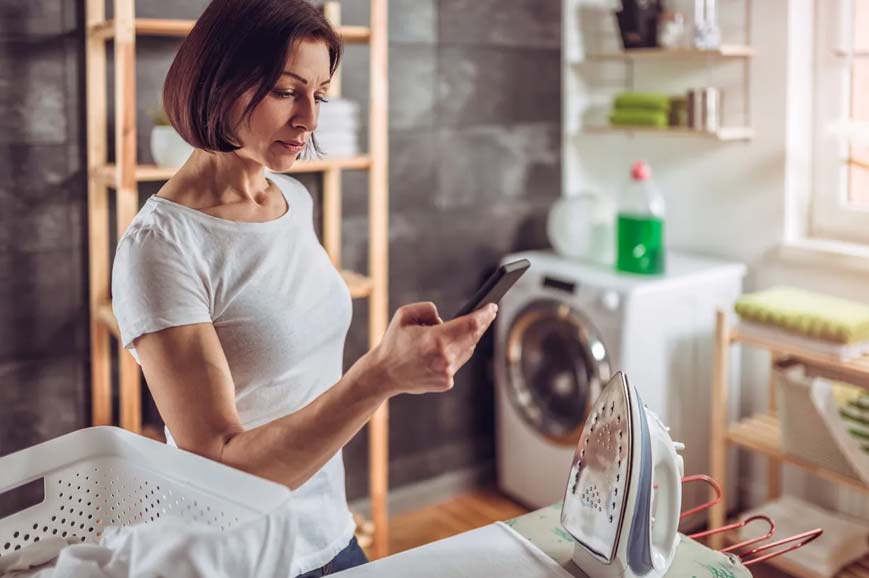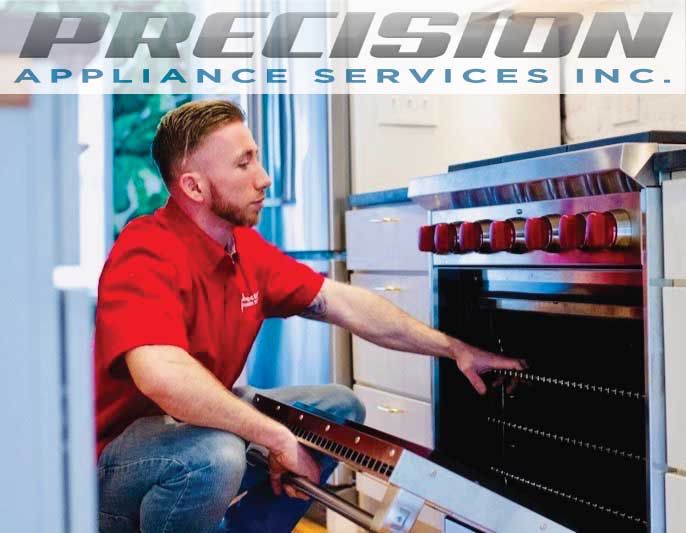The Ultimate Overview to Recognizing Device Repair at Home
When your fridge stops cooling down or your stove rejects to warmth, it can feel frustrating. Understanding device fixing at home can save you money and time. You'll find out to recognize signs and symptoms, use essential tools, and adhere to an organized troubleshooting process. Prior to you start, there are crucial security precautions you need to take right into account. What are one of the most typical problems, and exactly how can you repair them? Allow's discover the basics.
Typical Device Troubles and Their Signs and symptoms
When your devices start breaking down, it's necessary to identify the signs at an early stage. Disregarding them can cause larger problems and expensive repair work. If your refrigerator isn't cooling appropriately, you may observe cozy places or condensation developing. This might show a falling short compressor or an obstructed vent.Your dishwashing machine might show troubles with unclean recipes or unusual sounds during cycles. If you hear grinding or clanking, it's time to investigate.A washing equipment that won't rotate or drain pipes can leave you with soggy laundry, recommending a stopped up drain or a malfunctioning pump.Lastly, if your stove's temperature level seems off or it takes permanently to pre-heat, you could be taking care of a damaged thermostat. By staying alert to these signs, you can attend to issues prior to they escalate into major fixings.
Crucial Devices for Device Repair
When you're dealing with appliance repairs in your home, having the right devices is necessary. Fundamental hand tools like screwdrivers and pliers will assist you dismantle and repair different home appliances, while electrical testing gadgets ensure you're functioning safely with wiring. Let's discuss what you need to start on your repair work journey.
Fundamental Hand Tools
Having the right tools is necessary for efficient home appliance repair service in your home. Begin with a trustworthy screwdriver collection, including both flathead and Phillips types, as screws prevail in device setting up. Pliers are likewise essential; they help with gripping, twisting, and reducing cables or little elements. A set of needle-nose pliers can get to difficult situations easily. You'll need a great flexible wrench for tightening up or loosening nuts and bolts. An utility knife is helpful for reducing through packaging or insulation. Finally, don't fail to remember a tough workbench or surface to safely organize your tools and components. With these standard hand tools, you'll be well-prepared to take on most home appliance repair services that come your way.
Electric Screening Gadgets
Together with basic hand tools, electric screening gadgets play a crucial duty in appliance repair work. These tools assist you identify electric issues and guarantee devices work safely. A multimeter is vital; it measures voltage, existing, and resistance, enabling you to determine problems promptly. A non-contact voltage tester is another must-have, allowing you discover real-time wires without making straight call, enhancing your security. Secure meters are terrific for gauging current circulation in wires without detaching them, conserving you effort and time. Furthermore, circuit testers can quickly inspect if outlets are operating appropriately. By using these tools, you'll enhance your troubleshooting process and improve your fixing skills, making home appliance maintenance a lot much easier.
Step-by-Step Overview to Diagnosing Device Issues
When your device acts up, it can be aggravating, yet detecting the concern does not need to be overwhelming. You'll learn to determine typical troubles and use reliable repairing techniques. Let's walk with the steps to get your home appliance back in working order.
Usual Device Issues

Troubleshooting Strategies Clarified

Repairing Significant Kitchen Area Home Appliances: A Closer Look
Have you ever before wondered just how to tackle typical problems with your kitchen area appliances? Fixing major cooking area home appliances like fridges, stoves, and dish washers can be easier than you assume. Begin by determining the issue-- whether it's a refrigerator not cooling or an oven that won't warm. Frequently, a simple reset or examining the source of power can solve the issue.For fridges, tidy the condenser coils and check the door seals. If your stove's not home heating, examine the burner and thermostat. Dish washers could just require a clean filter or a reset to get them back in action. Always unplug the device before diving right into repairs to ensure your safety.Don' t neglect to speak with the individual handbook for details fixing pointers connected to your version. With a little patience and the right tools, you can with confidence take on device repairs and conserve money at the same time!

Repairing Washing Appliances: Tips and Techniques
When your laundry home appliances start breaking down, it can really feel frustrating, yet repairing them doesn't need to be a headache. Begin by checking the power supply. Verify the home appliance is connected in and the electrical outlet is functioning. Next off, evaluate the door or cover button; a faulty switch can avoid the maker from operating.For washers, if it's not spinning, look for out of balance tons. Redistributing the clothing may solve the issue. If your clothes dryer isn't home heating, tidy the lint filter and check the air vent for blockages.Listen for unusual sounds; they can show a trouble. If your home appliance is leaking, check the hoses for fractures or loose links. Paper any kind of mistake codes displayed on electronic displays, as they can assist you in identifying the concern. Seek advice from the individual handbook for particular fixing ideas related to your design.
Safety Preventative Measures to Take During Fixes
Prior to you start any device repair services, it's important to prioritize security to avoid mishaps or injuries. Initially, disconnect the home appliance or switch off the breaker to guarantee no power reaches it while you work. Usage insulated devices to decrease the threat of electric shock. Wear security goggles and gloves to protect on your own from sharp edges or debris (Washer dryer repair service Dependable Refrigeration).Make specific your work space is clean and well-lit, so you can see what you're doing. Maintain children and animals away from the location to prevent interruptions and potential risks. If you're handling gas devices, be extra mindful; check for leaks prior to proceeding.Take your time, and click for more info don't rush via repairs. If you really feel uncertain regarding any step, it's better to stop briefly and study than to presume. Adhering to these safety measures will assist develop a more secure atmosphere for your do it yourself appliance repair service project
When to Call a Specialist for Help
How do you recognize if it's time to hire a professional for device fixings? If you've attempted standard troubleshooting without success, it's a clear sign. If your home appliance still won't begin or reveals unusual sounds after resetting it, do not wait to seek specialist help.When you notice leaks, smoke, or melting smells, prioritize safety and security and call a professional promptly. These problems can result in more substantial damage or position risks to your home.Also, if your device is under warranty, speaking to a professional is frequently the very best path. They can guarantee that fixings won't invalidate your guarantee, saving you cash in the long run.Finally, if you're uncertain or uneasy with complex repairs, it's a good idea to leave it to the experts. Bear in mind, tackling complex issues without the appropriate proficiency can lead to costly mistakes. Trust an expert when in uncertainty!
Frequently Asked Inquiries
Just How Can I Protect Against Device Problems in the Future?
To stop device troubles in the future, you should perform routine upkeep, look for deterioration, clean filters, and stay clear of overloading. Staying proactive will certainly help extend their life-span and learn the facts here now keep them running smoothly.
What Are one of the most Common DIY Device Repair Mistakes?
You could forget security preventative measures, avoid repairing steps, or make use of incorrect devices when trying do it yourself device fixings. Rushing the process or overlooking supplier standards can lead to even more significant problems and costly mistakes. Stay person and notified!
Exactly how Do I Know if a Part Needs Substitute?
You can inform if a part requires substitute by inspecting for uncommon noises, leaks, or irregular efficiency. If the appliance battles to run correctly or shows noticeable damage, it's most likely time for a replacement.
Can I Make Use Of Generic Parts for Home Appliance Services?
Yes, you can use common parts for home appliance repairs, but identify they work - Kenmore Dryer Repair Oro Valley Dependable Refrigeration & Appliance Repair Service. Common components may conserve you cash, yet they can influence efficiency or long life, so consider your alternatives thoroughly before choosing
What Guarantees Cover Device Services?
Most appliance guarantees cover repair services for manufacturing flaws, but they often omit damages from abuse. Examine your warranty terms very carefully, as some could require using licensed professionals and initial parts for protection to stay legitimate.
Comments on “Best Practices for Dryer Vent Cleaning – Dependable Refrigeration & Appliance Repair Service Dryer repair near me”